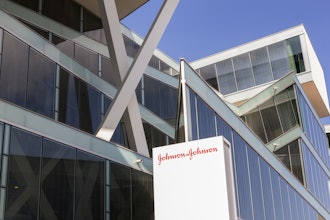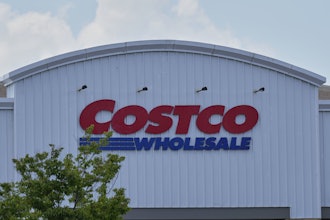Famous American author H.G. Wells stated, “Adapt or perish, now as ever, is nature’s inexcusable imperative.” If it is indeed true that the only constant is change, then adaptation and innovation will make the difference between success and failure. Nolan Ryan, a Hall of Fame Major League Baseball pitcher and successful entrepreneur once said, “Enjoying success requires the ability to adapt. Only by being open to change will you have a true opportunity to get the most from your talent.”
Within a growing world economy and amidst geopolitical uncertainty, the statements from both Ryan and Wells bode true for corporate organizations. Disruptors come in many shapes and sizes, ranging from technological advancements to niche industry competition. Disruption has become the norm and the ones who adapt will reap the rewards. To both keep pace with the competition and lead the marketplace in 2019 and beyond, organizations will need to find ways to advance technology, control the effects of inflation and escalating operating costs, optimize their networks, recruit and retain the best and future resources, and know when to ask for help. Let’s take a closer look at five ways these will impact manufacturers in the coming year.
1. Experienced Inflation and Increased Cost of Operations
We have already seen an upward trend in the cost of commodities and raw materials. There are many factors to this uptick, notwithstanding the U.S.-China trade war, other foreign trade restrictions and geopolitical uncertainty.
Adding to the increased cost of materials, transportation costs continue to rise due to limitation of trucks, qualified drivers and special rail cars. A strong economy is triggering a surge in demand and commodity prices, and a scarcity of skilled labor. Strong demand for oil and other utilities is driving up operational and transportation costs as well.
These factors will combine to increase the overall cost of raw materials and production.
While the economy may bear some pass-on costs in the way of rising product prices, a brutally competitive market will limit price elasticity, compelling manufacturers to look for other efficiencies in their operations to reduce production costs. Organizations will need to establish and maintain excellent asset management programs to get the most out of their current equipment. Production will need to be maximized by eliminating waste, optimizing operating envelopes, improving raw material usage and minimizing downtime. Equipment reliability will also need to be addressed, along with maintenance costs through effective predictive maintenance strategies and efficient maintenance execution.
2. Escalation of Technology Innovation and Automation
Trends such as increased cost of raw materials, growing competition, demands for expedited product innovation, poor maintenance and reliability forcing asset replacement, and aging assets are creating a sense of urgency among manufacturers to accelerate the pace of their technology adoption. The old English proverb, “Necessity is the mother of invention” continues to reign true. Due to raising operational costs and intensified global competition, technology innovation is expected to grow and revolutionize manufacturing.
From Internet of Things (IoT) to Machine Learning and Artificial Intelligence (AI) to robotics and automation, manufacturers are assessing the value these technologies bring and prioritizing investment based on the business case.
Organizations are moving toward digitization for a variety of business needs, including incorporating millennials into the workforce who desire and are more familiar with computerized technology as opposed to physical labor, availability and production throughput adaptation to meet the supply/demand peaks, and the decreasing trade skillsets that are becoming offset by IT and computer systems related to operating environments. Digitization and emerging technologies will help manufacturers achieve greater efficiency and visibility within their own operations, and also will trigger a few growing pains and revolutionary change.
3. Increased Efforts to Recruit and Maintain the Best Personnel
The tight employment market is likely to restrict hiring of qualified personnel. There is a need to attract added perks and benefits, from student loan forgiveness and better healthcare coverage to foosball tables in the breakroom.
This investment in higher-level, more technologically savvy talent is expensive, but offers an opportunity for manufacturers to leverage professional employees to help maximize the value of emerging technologies, rebuild processes, and become more data-driven in their decisionmaking.
The declining pool of unskilled labor will be offset with automation technologies on the plant floor.
4. Network Optimization will be Critical to Success
Networks of production facilities and supply chain partners were established in response to an increasingly global world and a need to reduce production costs. In most industry sectors, organizations are no longer seeking the lowest cost, but rather the highest value solutions.
Established in a less volatile, slower-moving world, the same assumptions no longer apply in today’s world that is chock full of ever-changing regulations, frequent natural disasters, unpredictable political climates, and disruptive technologies. In 2019, manufacturers will reconsider and optimize their network of suppliers, distributors and manufacturing facilities.
One such strategy is implementing blockchain, which is simplifying supply chains and reducing transaction costs by avoiding the route of traditional banks. Blockchain simplifies material traceability, ensuring proper documentation for each product to its source. The benefits are best realized when different industry participants come together to create a shared platform. Creating a blockchain will undoubtedly generate challenges for internal buy-in, data harmonization and scale.
5. Increased Reliance on Operational Consulting Groups
With so many variables at play, manufacturers will look to qualified third-party partners for expertise and certainty.
Internal Continuous Improvement teams will be insufficient to tackle every analysis, make every plan, develop expertise in every technology and implement the solutions. To help them sort through this overwhelming volume of critical decisions, manufacturers will look to the expertise of operational consulting groups and external industry expertise to help identify and prioritize meaningful changes and investments, become data-driven, seek strategies, and implement long-term sustainable operational transformation.
As we forge ahead into the New Year, take some time to plan, establish goals, and identify resources and priorities.
While the industry as a whole is changing, there is no one best practices or well-worn path to follow. Keep these predictions and associated trends in mind as you pioneer your own path toward the future state of your organization.
Melvin Bosso and Lotfi Maroizy are principals at Myrtle Consulting Group.






















